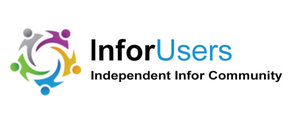Inexpensive, Readily Available Biomarkers for Disease Identification
COVID-19 became a catalyst for providing virtual healthcare delivery services. As the pandemic raged across the country, providers began to immediately implement the use of telemedicine solutions to connect with patients who needed care but were also at high risk for virus infections. One challenge for the early telemedicine sessions is that providers were, in most cases, not able to have the most recent patient vital signs that could support disease identification and management.
Challenges for collecting patient information to support virtual telemedicine sessions relates to the ability of the patient to operate remote patient monitoring devices. The operation includes the ability to connect the devices to a network or cell phone to capture the monitor results for transmission to the telemedicine session or the provider’s EHR. The patient must also know how to effectively operate the remote patient monitoring device (e.g., blood pressure cuff, pulse oximeter, thermometer, etc.).
Another challenge for remote patient monitoring devices is the risk of technological obsolescence. Smart watches are emerging as an effective RPM strategy, but the watch makers continually upgrade the watches and add new monitoring functionality. The Apple Watch you have today may not be as effective as or provide the range of monitoring services of next year’s watch. But, for some patients, shelling out $400 per year for a new watch may be prohibitive.
Voice/Speech Biomarkers Become the Ultimate RPM Services
The most natural method for capturing a patient’s clinical status is via voice biomarkers. Biomarkers in a patient’s speech are emerging as new ways to monitor for illnesses using AI/machine learning, ranging from COVID-19, Parkinson’s disease, and pulmonaryhypertension. While voice biomarkers will not provide RPM capabilities for the basic vital signs, they are advancing to provide identification and diagnosis of patients with significant illness.
Snap just spent $70 million to acquire enterprise voice assistant developer Voca.ai, which is working on voice biomarkers to identify COVID-19 infected patients. Imagine having an AI voice biomarker component integrated with your call center phones or your telemedicine solutions that can actively monitor the patient for potential COVID-19 infection. Patients that have a positive result can then be tested to verify the COVID-19 infection. This approach will help to reduce the unnecessary testing of patients for COVID-19, and that can help drive down healthcare costs for states and healthcare organizations.
Future implementations of voice biomarkers in call centers or 911 services could help to identify patients who are at risk for COVID-19 so that first responders are appropriately protected. This application of voice biomarkers could also be used to alert first responders to patients with pulmonary hypertension that so they have the equipment and medications needed to effectively stabilize the patient. Advancing voice biomarkers to identify additional cardiopulmonary and neurological disorders will provide an early warning system for managing high-risk patients more effectively.
Voice Becomes a Diagnostic Guidance Tool
While most remote patient monitoring devices provide data on specific vital signs to support patients with known chronic illness or disease, they do not provide insights or guidance to support diagnosing a patient or discovering a secondary condition. The power of AI-supported voice biomarkers is the ability to quickly and accurately identify patient conditions that are unknown or unexpected, and that can have a significant negative impact to the patient’s health if not detected and treated quickly. The ability to integrate these tools into smartphones and call centers will provide an inexpensive and effective health-screening function to further support virtual patient care.
Embryonic Vendors May Become Disruptive Giants
Voice biomarkers is in the very early stages of research, testing, and commercialization. Most of these companies will end up being acquired by larger healthcare companies as demonstrated by the recent acquisition of Voca.ai.
- Salcit Technologies (India) – COVID-19 risk.
- Voca.ai (Israel) – COVID-19 in test mode with Carnegie Mellon University.
- VocalisHealth (U.S.) – COVID-19 in test mode, and pulmonary hypertension testing with Mayo Clinic.
Success Factors
- Organizations should thoroughly review and test the voice biomarker AI algorithms on patient populations that have confirmed diagnoses for the illnesses of interest.
- The ability for the voice biomarker applications to run on both iOS and Android platforms is essential to support high-quality patient engagement.
- Organizations who plan to use this technology in call centers need to confirm their telephony equipment can support voice biomarker AI solutions.
Summary
Voice biomarkers as an AI solution have a tremendous potential to supplement virtual healthcare services. The ability to apply these solutions with smartphones, telemedicine audio, and call centers will create another level of healthcare management that will improve care quality and outcomes. The ability to identify potential chronic illnesses or patient conditions that can prove fatal from a patient’s conversation with a care provider is likely to reduce deaths and expensive emergency or acute care.
As an example, the ability to identify a patient who has COVID-19 from a conversation should result in immediate quarantine procedures or hospital admission. Early identification of COVID-19 using this method will likely result in quicker contact tracing processes and improved protection for care providers who may encounter the patient in transit to the hospital. The identification of patients with unknown pulmonary hypertension should reduce stroke and heart attack incidents.
The advancement and commercialization of voice biomarker AI solutions will deliver the next generation of healthcare diagnostic support.
“Utterances are the new hashtags.” -Albert Creixell Partnerships Head, Amazon Alexa
Photo Credit: Adobe Stock, natrot


